How to flush cannabis plants the right way
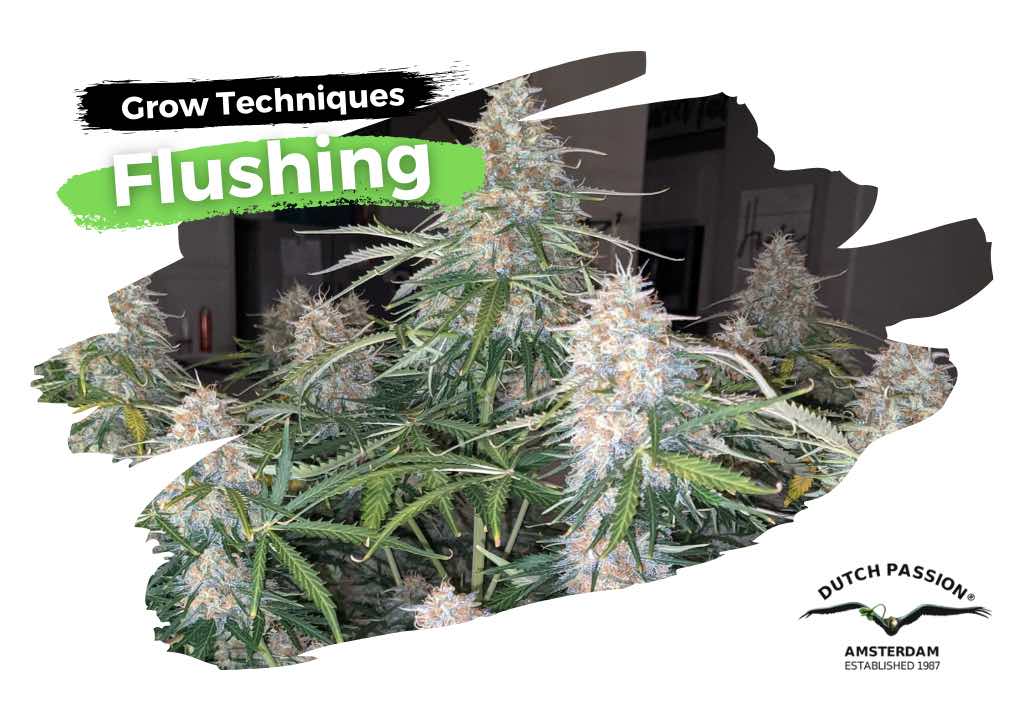
Flushing cannabis plants is often done a week or two before harvest. It is the process of removing all feed additives and just supplying plain water at the end of bloom. The logic is that this allows the plant to use up all remaining minerals and nutrients within the grow medium and the plant.
Cannabis flushing is claimed by many to produce a cleaner, smoother smoke with improved taste and (according to many) improved potency. However, as with many things relating to cannabis cultivation there are a growing number who disagree and are unconvinced by flushing. So what is the right way to flush cannabis? And what can be said about the case for not flushing cannabis? Which side of the cannabis flushing debate does science back, and why?
What does flushing cannabis mean?
Flushing cannabis means providing plain water to the plant for the final stages of bloom. To some that may mean the last 14 days of bloom. To others cannabis flushing is a shorter process, perhaps just 3-7 days before harvest. The idea is to remove any remaining minerals from the plant grow medium as well as allowing the plant to use up any remaining ‘excess’ minerals within it’s own tissues.
Fans of cannabis flushing claims it makes for a dramatically smoother smoke/vape with less coughing. Not only that, many of those that flush their cannabis have done so for many years and feel it enhances potency.

Flushing cannabis and nutrient lockout
Cannabis flushing and nutrient lockout are two somewhat different processes/situations which result in the cannabis plant not being able to absorb minerals.
| Flushing cannabis | Nutrient lockout |
|---|---|
| Refers to the process of providing just plain water at the end of bloom, just prior to harvest. The idea is that the plant has reached the end of flowering, making it a good time to optimise smoke quality/smoothness by feeding water without any additional minerals. Note that not all growers believe in the merits and effectiveness of flushing. | Often refers to the phenomena of nutrients being present in the grow medium but which are not bio-available to the plant due to the wrong pH. By adjusting pH slightly that mineral can once again become biologically available. Nutrient lock-out is often resolved by checking pH and (if necessary) re-calibrating your pH meters. |
Pros and Cons of flushing cannabis
Many of those that have flushed their cannabis crops have done so for many years and may firmly believe that it’s an essential part of the route to Grade-A buds. Cannabis flushing has been very popular over the years and it’s fair to say that for many growers, flushing is considered an important part of their cultivation process.
However, there is an increasing number of growers that point towards recent studies that seem to suggest that cannabis flushing actually has no effect at all on the residual minerals within the plant. Nor does flushing seem to improve potency. Some recent studies even suggest that un-flushed weed actually has superior taste.
So when should you flush your cannabis plant? How should you do it and is it foolish to consider not flushing cannabis at all?
When to flush your cannabis plant?
Many of those that believe in cannabis flushing start the process 1-2 weeks before harvest. But many also believe in shorter flush periods of 3-7 days too. In reality a range of flushing preferences exist though perhaps it’s safe to say the majority of believers flush their plants with plain water for 1-2 weeks just before harvest.
Although the idea is to deliver plain water (to ‘flush’ excess minerals and nutrients out of the soil) some growers will use flushing additives which are claimed to accelerate the process of mineral removal.
Such additives may contain surfactants, these help increase the ‘wetness’ of the water and may help dissolve and remove remaining minerals. Other additives include enzymes which can biologically digest/break-down remaining organic matter such as starch and carbohydrates in the grow medium.
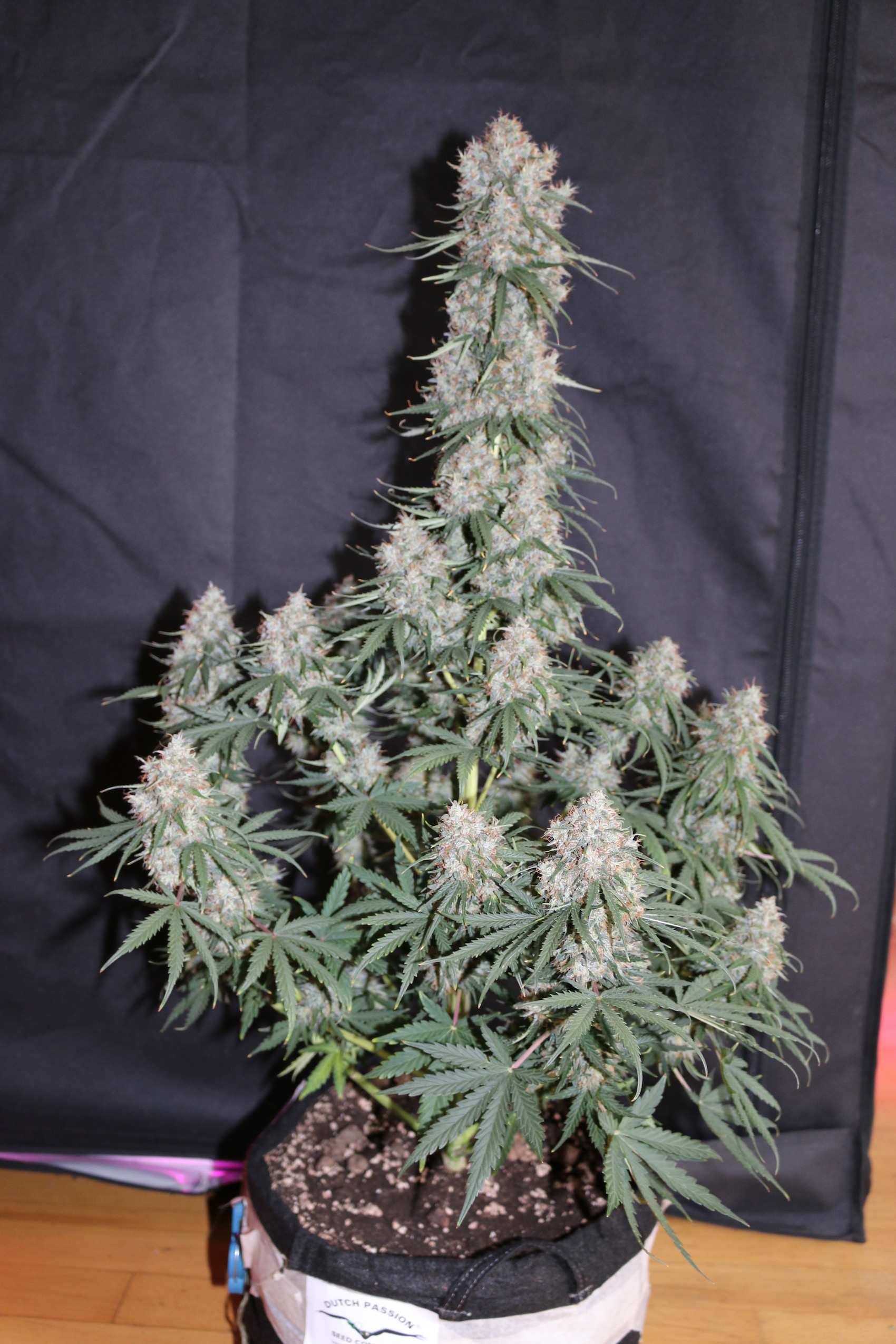
What do you need to flush cannabis plants?
All you really need is plenty of water! The exact process of when and how much water to use for flushing varies from grower to grower. Some pro-flushers will bring out additional equipment to measure the EC (electrical conductivity) or TDS (total dissolved solids) of the flushed water. This allows them an idea of how effective each flush of water is. In theory, with each flush of water, the mineral content (or total dissolved solids) in the flushed-out water should gradually decrease.
How to flush cannabis plants properly
An easy way to flush cannabis is to soak the plant container with as much water as possible for around 5-10 minutes. The process of flooding the grow medium allows the minerals/nutrients to dissolve in the water. Then flood the soil again and watch the water flush away, often with some discolouration from the mineral content/dissolved solids.
More experienced growers will monitor the waste flushed water and repeat, aiming for an EC (electrical conductivity) of 0.1 (50 ppm) or below. Those without the means to measure the EC or TDS (total dissolved solids) may simply prefer to repeat the flushing process several times.
This process is similar in principle to that used if your plants have been accidentally over-fed with too many nutrients. Rather than leave these nutrients in the soil where they might damage the roots/plant, a good water flushing can remove them and prevent any potential damage from nutrient burn.
| Flushing cannabis in hydroponic systems |
|---|
| Flushing cannabis in hydroponics is perhaps easier than flushing cannabis grown in soil or coco fibre. Hydroponics, unlike soil, doesn’t have a ‘grow medium’ that can hold/store nutrients. Instead of repeatedly leaching/washing minerals out of soil you simply drain the hydroponic system and re-fill with plain water at the normal pH (typically around 5.8). Learn more about growing cannabis in hydroponics! |
Flushing cannabis tips and recommendations
Those that have worked hard to create a natural living soil, such as an amended organic soil (sometimes referred to as ‘super soil’) may not want to flush their plant at all. That’s because the organic grow medium is often the result of several months of careful preparation. This can include the presence of a healthy bacterial culture within the soil and beneficial mycorrhiza, perhaps created lovingly with slow release organic nutrients. In such cases, growers may prefer to avoid flushing their cannabis plants and instead just continue to allow them to grow naturally until harvest.
But what about other situations? Are there circumstances where flushing cannabis isn’t recommended? Do some people routinely avoid cannabis flushing feeling that it is merely a cannabis myth not backed-up by any logic or science. Is there a logic for not flushing cannabis?
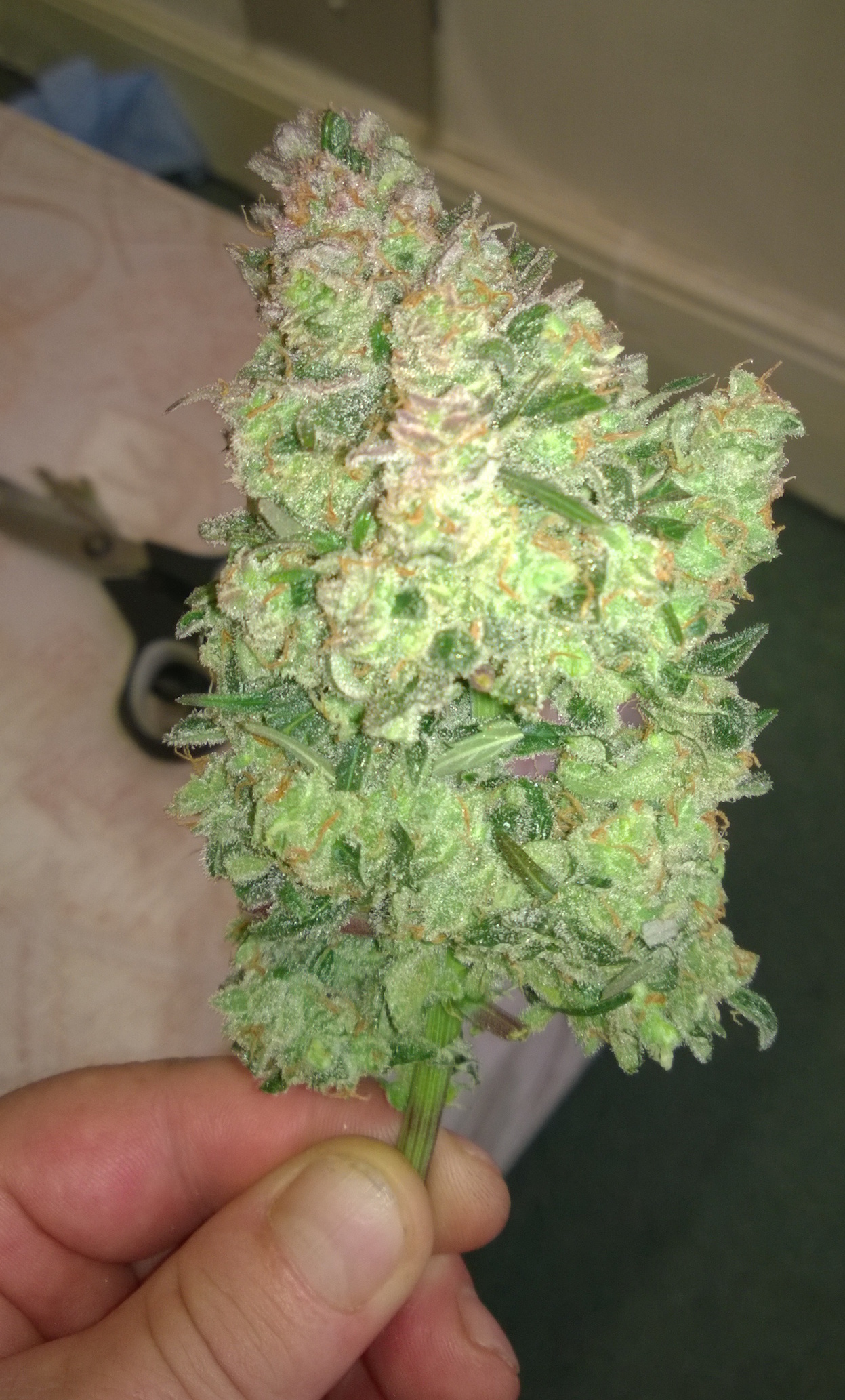
The case for NOT flushing cannabis
In recent years, more people have taken an in-depth look at cannabis flushing to try to better understand what this actually does and whether it produces any scientifically measurable benefits. With so much investment pouring into the legal, licensed cannabis grow industry there is a mounting scientific interest to better understand flushing.
Laboratory testing of flushed cannabis and non-flushed cannabis, 0-14 days flushing
A recent study by RX Green Technologies, a nutrient company, was done with identical cannabis clones that were grown in the same way and flushed differently at the end of bloom. Some plants had zero flushing, others were flushed for 7, 10 or 14 days. The following observations were made:
| No flush | 7 day flush | 10 day flush | 14 day flush | |
| %THC | 21.58% | 21.81% | 22.73% | 21.62% |
| Buds/plant | 103g | 99g | 89g | 98g |
| % terpenes in dry buds | 1.46% | 1.56% | 1.63% | 1.64% |
The results show no significant trends or tendencies for yield, terpene content or THC levels to vary beyond experimental error. This may come as a surprise to fans of flushing. Taste potency and yield are not substantially affected one way or the other.
Further analytical work was conducted into the mineral content in the buds at harvest and shown in the graph below. Note how the levels of Nitrogen (’N’), Phosphorus (‘P’) and Potassium (‘K’) are all identical whether un-flushed, or flushed for 7, 10 or 14 days. Measurements for Calcium, Sulphur/Sulfer, Magnesium and other minerals all showed similar results, i.e. no statistically significant difference between buds from flushed and non-flushed cannabis.
For more detail, you may wish to read the full RX Green flushing trial report here. It should also be noted that other scientific studies such as this one from Cannabis Science Consulting show similar results.
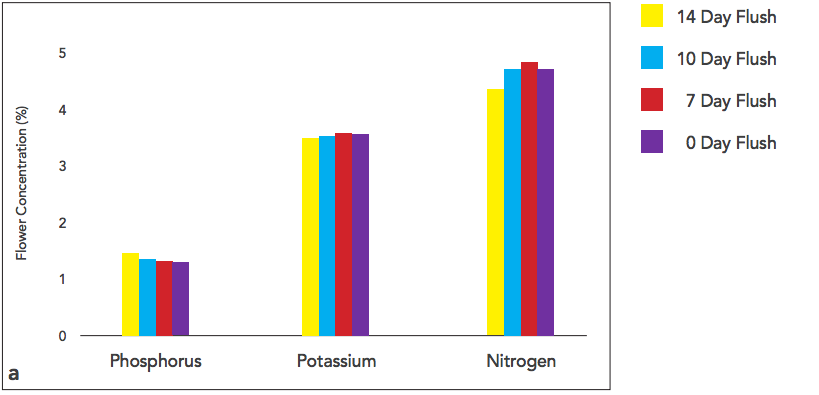
Smoke testing of cannabis flushed for 7, 10 and 14 days with non-flushed cannabis
The same buds that were lab-tested were then given to a smoke test team for an unbiased ‘blind’ review. Note that all the lab testing showed that the samples were practically identical in terms of THC, terpenes, yield and mineral content (Nitrogen, Potassium, Phosphorus, Calcium, Sulphur/Sulfer, Manganese, Boron, Copper, Zinc, Iron, Molybdenum etc). This strongly suggests that the smoke-test team would have received near-identical buds in terms of potency, taste, residual minerals etc.
The smoke test team rated the buds on several factors. Overall there was no significant statistical trends observed from the smoke test team. Curiously, when it came to taste, the non-flushed weed has the highest ‘Good’ rating from 47% of responders. Buds from the non-flushed cannabis plant also had the highest ‘Great’ rating (16% of responders).
The smoke test team also rated the ash colour, smoothness and sweetness of the smoke/vape. Again feedback showed differences were found, though these were not clear-cut statistically significant findings suggesting that the bulk of the smoke test team were unable to find any major differences between the flushed cannabis buds and the non-flushed buds. Again, more detail is available in the full report and a video review of these results is shown below. If you’re particularly interested in the subject of cannabis flushing, the video offers a deep-dive into the pros and cons.
Is cannabis flushing worth the effort or not?
Many of those that routinely flush their cannabis may well be doing so based on the recommendations of others. They may well have been flushing for years and feel that it has saved them a considerable amount of money on nutrients without any ill-effects. And they may be 100% correct! However, they may also be wrong to assume that their flushed cannabis plants will produce a smoother smoke or a tastier/more potent one. Many growers feed their plants right up until harvest, feeling that cannabis flushing offers no significant benefits and is based on dubious logic. They may also be perfectly correct as well! So what is the right recommendation, to flush or not to flush?
In favour of cannabis flushing
The scientific results suggest that flushing cannabis plants doesn’t significantly change the composition of the final buds. Cannabinoids, terpenes, minerals and yield all remain fairly similar whether the cannabis plant wasn’t flushed at all or whether it was flushed for 7,10 or 14 days. You might conclude that flushing would result in cash savings since you are not using potentially expensive nutrients in the last 2 weeks.
In favour of NOT flushing cannabis
One potential risk of flushing is that you inadvertently start it a little bit too early. Less skilled growers may not have quite enough experience to know whether their particular phenotype is likely to be 2 weeks away from harvest or more. This could mean that flushing is accidentally started 3-4 weeks before harvest, in which case the plant will miss out on valuable nutrition while it is still trying to bulk-up and produce blooms.
The science suggests that there is no downside from feeding your plants right up until harvest date (other than the cost). Therefore, if in doubt, less experienced growers may prefer to feed all the way until harvest.
Cannabis flushing is all about your choice
Whether you’re growing autoflower seeds, feminised seeds or regular cannabis seeds the choice of whether or not to flush is yours alone. Some growers flush just to save cash on nutrients. Others flush cannabis in the belief that the process improves taste and potency whilst reducing the ‘harshness’ of the smoke. However, the latest data would suggest that these beliefs have no scientific backing. How do you feel having reviewed the data? Will you continue to flush or do you prefer to allow the plants to feed naturally until harvest?




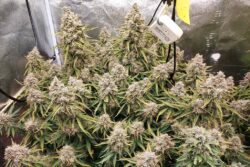







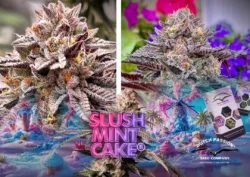
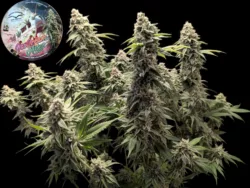
7 Comments. Leave new
I would rather the no flush method. Because the plants need to eat during those last 14 days. You see the nutrients are not as potent in the end as they were when you first added them to the soil medium. I personally top dress. So my final feed is usually 5weeks before harvest. So I have no need for flushing. I know that my plants are ready when the larger fan leaves begin to fade. Then I test the ppm’s of my run off and it’s always below 100 so that’s my reason. No need to completely deprive the plant of food for two weeks. Just let the plant eat it’s weak diluted food during the last few weeks few weeks. I think when the plant begins to canabulize itself is best.
So when do you add your last top dressing to the soil?
It’s your grow, flush if you want, or don’t. Have fun with it. I personally don’t find any benefit to flushing other then nutrients savings..I have done both. But I am going to give my girls a 6 or 7 day flush this time around, just because I feel like it and I can. It’s my grow. ✌️
If you grow in coco or inorganic soil and are feeding with a nutrient solution, flushing is probably a good idea. I found that nutrients build up in the soil over time and there’s usually an excess in the final weeks. I’d argue that flushing doesn’t necessarily starve your plant, but allows it to use up that excess nutrients in the soil. When you start the flush, you’ll notice that the runoff isn’t clear, as it contains residual nutrients. By feeding with straight water, you are allowing the plant to use up the remaining nutrients. If you are growing with organic soul or via hydro, you probably don’t need to flush because there’s is no excess of nutrients anywhere.
Crop steering, 1gallon coco pots, generative and vegatative steering shouldnt need to flush with water. As long as you have run off, your PWEC will remain where it needs to for perfect osmosis between roots and plant.
Flushing with water just reduce your PWEC and leads to nutrients lock out if you’re not careful. To flush or not to flush! Individual Perspective and situation dependant.
So you can gain 0.5% THC density by losing 10% of your harvest with zero noticeable gain in quality. That’s a net loss of 2 grams of THC per 89g of weed flushed for 10 days. Seems like a no-brainer to me, sacrificing 10% total yield and 3% total THC for an unnoticeable higher concentration of THC. Best article I’ve found so far on flushing.
If you have experience with the plant, you probably already know not to overfeed it or add too much sugar — something many growers tend to do. Personally, I can’t really tell the difference between flushed and unflushed soil-grown cannabis just from a single session. But over the long term — after vaping or smoking the same flower for weeks — the difference becomes clear.
Overfed flowers tend to gunk up your vape with black tar much faster. Back when I used to smoke, I didn’t notice it as much — probably because that tar was going straight into my lungs. But now that I vape exclusively, I really appreciate clean, well-cured flower.
In my experience, you don’t need to overdo it with nutrients. Just give the plant what it needs and keep it healthy until harvest. Cannabis is a pretty frugal plant, especially when grown in soil.